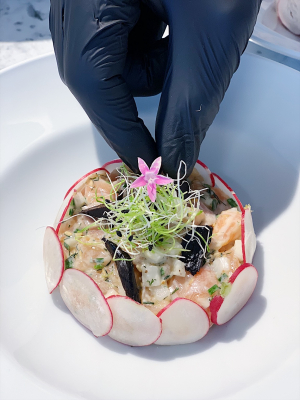
If you want to sample the delicious and diverse food of France, learn about French cuisine before you go. You might be surprised to learn that the French rarely use spices in their dishes, and they may not have salt on the table. However, you will be impressed by how much duck they love! Traditional magret de canard is slow-cooked duck, leaving its skin crispy and the fat melting off. Not only is duck so cute, it's also highly nutritious!
20 fun facts about French cuisine
There are several fascinating facts about French cuisine. For instance, the French don't eat celery. That's probably not the first thing you'd think of, but it's an interesting fact that will have you wondering if celery is a staple of French party fare. In addition, French people enjoy drinking wine before and after meals. So, if you want to impress your guests, try ordering a glass of wine along with your appetizer.
Origins
French cooking is the fusion of traditional and modern styles. French chefs emphasize taste, presentation, and community. From Middle Ages banquets to the Nouvelle cuisine, French cooking has evolved from simple to sophisticated. The evolution of French cuisine began with the use of the roux, a combination of flour and butter, which thickens sauces and soups. Roux soon became an indispensable ingredient in French cooking. Before the invention of the roux, chefs thickened soups with bread.
Dishes
If you've ever been to France, then you know that French food is one of the best in the world. But what are the things that you should know before you try it? First, it's not just delicious, it's also incredibly beautiful and well-presented. As a result, French chefs are known to take a great deal of time and effort to create their dishes and present them beautifully.
Wines
There are different types of wines in French cuisine. The best French wines are categorized according to their type. French wine varieties include Cabernet Sauvignon, Chardonnay, Pinot Noir, Sauvignon Blanc, Syrah, and more. They are grown throughout France. Other countries have adopted winemaking practices in France, but the French have long been the country of wine. So, what do these varieties have in common? Read on to find out more!
Crepes
One of the most popular dishes in French cooking, crepes are a simple, yet tasty way to enjoy a rich meal. In order to create the perfect crepe, a good technique is essential. Butter is usually brushed on the pan before each crepe is made, and the butter should be used throughout the entire batter. You may also want to sprinkle a little cinnamon or nutmeg on top before cooking the crepes.
Bread
The bread served in French restaurants is often made from baguette dough, which is a long thin loaf. This bread is made from a lean dough and characterized by its length and crisp crust. Baguettes are served with soups, salads, and other dishes. They're also known as "boule," a French term meaning "loaf."
Onions
Onions are widely used in French cuisine. They have many uses, including salads, soups, risotto, and even desserts. Their high sugar content (five to ten percent) and ability to caramelize under low heat makes them perfect for onion tarte tatin, or French onion soup. Onions should be stored in cool, dark places. They should not be stored near potatoes or metal containers.
Onion soup
Onion soup in French cuisine is often based on meat stock and onions, and is often served with croutons or a larger piece of bread topped with cheese. This classic soup is of ancient origin, but only recently has it experienced a renaissance in popularity in the United States. As the French became more popular, French onion soups gained a wider audience, and grew in popularity.
Leeks
A popular star vegetable of the TV show French Women Don't Get Fat, leeks in French cooking have a noble reputation in France. Known as poireau, the leek is one of France's most prized vegetables and holds the title of Ordre national du mérite agricole, a national award for distinction in the fields of agriculture, food, and wine. Here are some common ways to incorporate leeks into your French cooking.
Cheese
There are many varieties of cheeses in France, and the region where the cheese was made has an influence on the variety. The northern region has Camembert and Brie, while the southern region produces Emmental, a strongly scented cheese. Goat cheeses are mostly made in the western regions of the country. Because France is so diverse in climate, cheeses made in each region have distinct tastes. To get the most out of these unique flavors, try a cheese made in one of France's many regions.